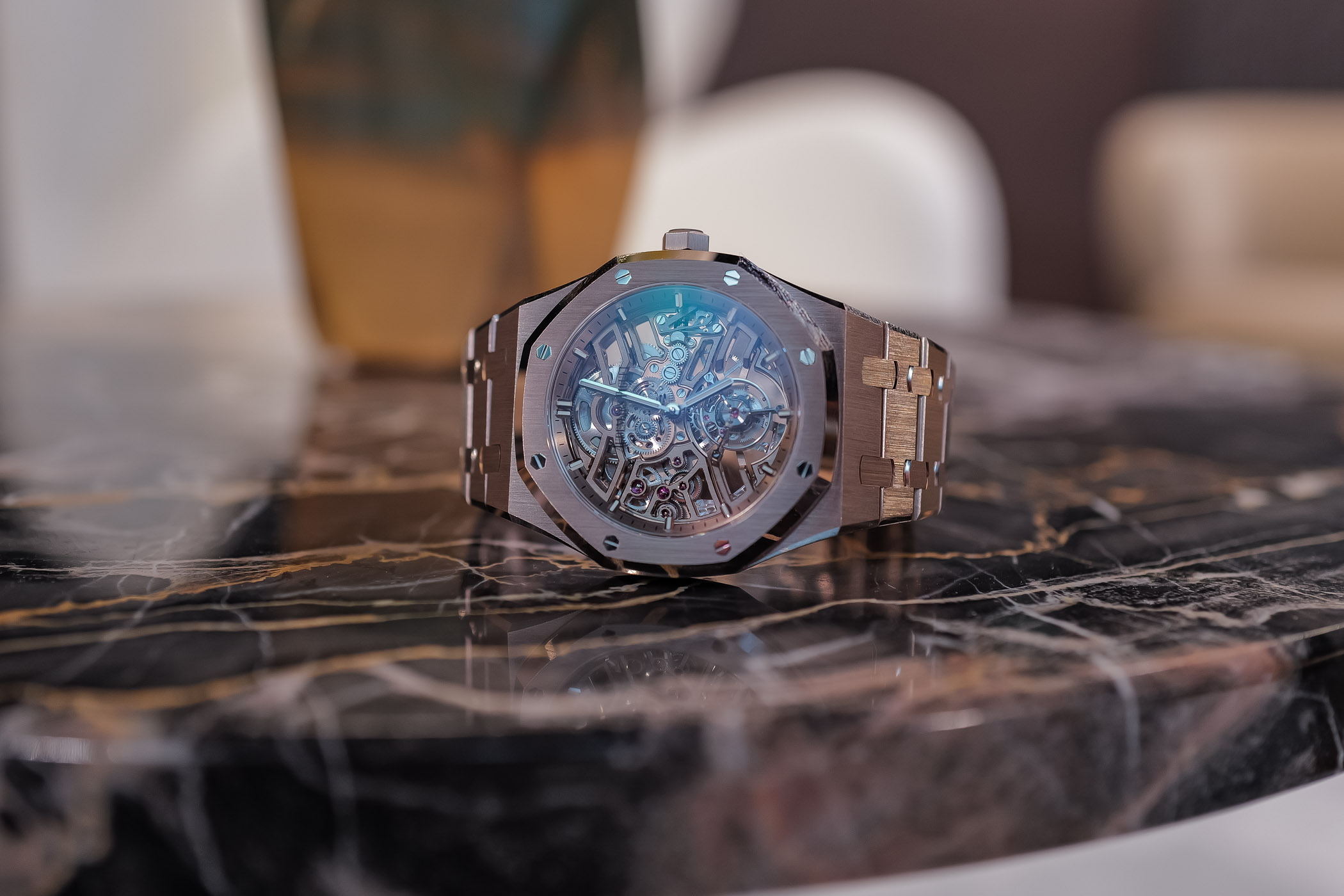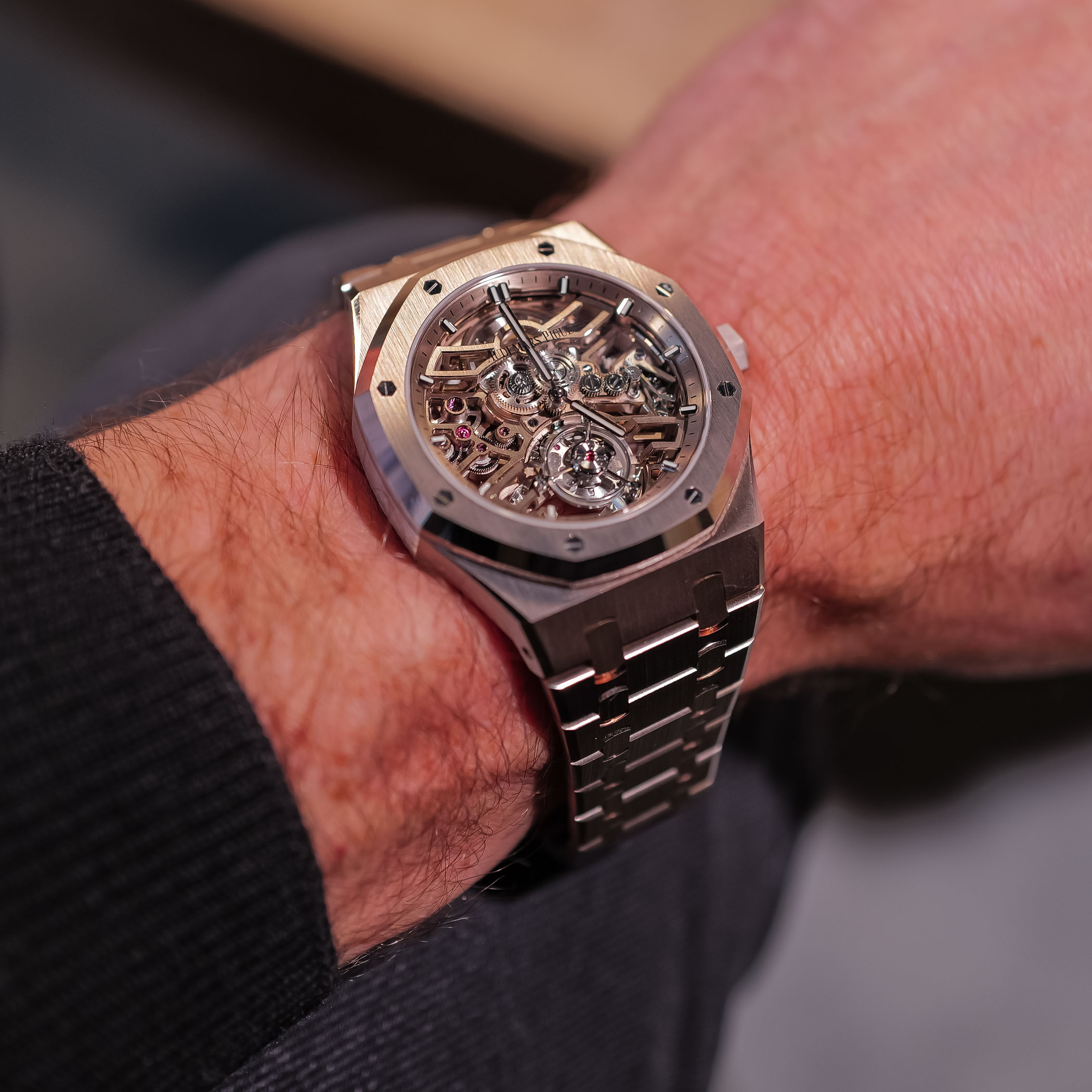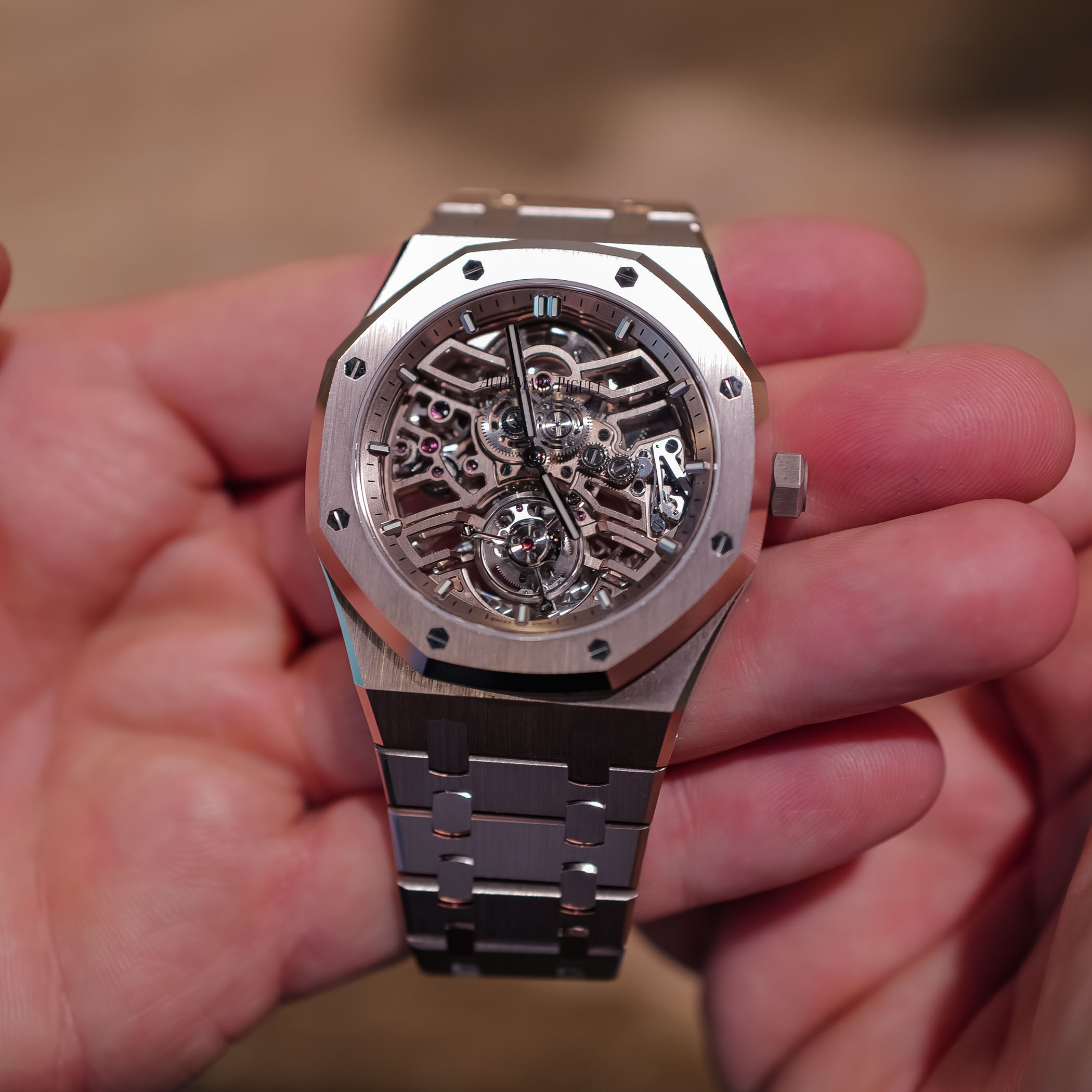A new Sand-Gold Alloy for the Audemars Piguet Royal Oak Selfwinding Flying Tourbillon Openworked
AP's latest alloy is a surprisingly subtle take on gold.

While the Royal Oak was initially born in stainless steel – which, in our opinion, remains the material of choice for the classic Jumbo – the emblematic Audemars Piguet collection rather quickly embraced gold. Since then, precious metals have become integral to the series, always leaving a memorable impression. In its latest venture, the brand introduces a novel 18k gold alloy labelled “sand gold” – a mix of solid gold with copper and palladium – unveiling a new variant of the Royal Oak Selfwinding Flying Tourbillon Openworked chosen to showcase the unique aesthetic qualities of this material.
The handsome monochromatic Royal Oak Selfwinding Flying Tourbillon Openworked debuted in stainless steel in 2022 as part of Royal Oak’s 50th Anniversary celebrations. This timepiece featured Audemars Piguet’s latest in-house 2972 calibre, an evolution of the Calibre 2950 introduced in 2018 in the Code 11.59 collection.
The newly unveiled sand gold version introduces a distinctive aesthetic while retaining the iconic octagonal shape of the 41mm case and an octagonal bezel with broad polished chamfers. Developed by Audemars Piguet, the sand-gold-toned galvanic colour adorns the openworked bridges and main plate of the Calibre 2972. In a harmonious composition, rather than stark contrast, the movement’s inner workings feature rhodium-toned components, adding depth and sophistication to this exceptional timepiece. About the material itself, this 18k gold alloy is named “sand gold” due to its subtle colour, wavering between white and pink gold. Composed of solid gold, copper and palladium, it results in a warm grey colour or a very discreet gold tone (depending on the way you want to look at things), which is distinctive and surprisingly restrained, almost like the champagne colour used for dials. It otherwise retains classic properties of gold alloys.
Time is indicated with white gold hands with luminescent material filling; the applied white gold hour indices are lume-treated, too. Delving into the intricacies of the openworked movement reveals meticulous finishing executed to the highest standard. From satin to circular and sunray brushing, snailing, polished chamfers, to both vertical and horizontal brushing – every detail exudes top craftsmanship. Even before reaching the flying tourbillon at 6 o’clock, seamlessly integrated into the architectural construction, a wealth of captivating details awaits exploration.
Turning to the caseback, the rhodium-toned pink gold oscillating weight harmoniously augments the two-tone design of the watch, adding a refined touch. Calibre 2972 operates at 21,600 vibrations/hour and has a power reserve of 65 hours when fully wound.
The Royal Oak bracelet, crafted from the innovative sand gold alloy, showcases a typical mix of brushed and polished surfaces; it is secured with an AP folding clasp. The new Sand Gold Audemars Piguet Royal Oak Selfwinding Flying Tourbillon Openworked 26735SG marks its entry into the permanent collection, and will be priced at CHF 250,000 (before taxes). More details at www.audemarspiguet.com.











3 responses
Did you by any chance ask them why they didn’t use this metal with the slimmer RD#3 flying tourbillon movement? Could have been down to 8.1mm thickness. An unusual alloy for sure. Cheers
Why don’t you talk about this new material in the article ? You mention it in the headline but then just say that it is unique and distinctive without actually describing it. How do you feel about it ?
@vince – we’ve added some lines concerning the material and the experience we had with it. The composition is a mix of gold (75% minimum to be qualified as 18k gold) and then undisclosed proportions of copper and palladium (seeing the light and subtle colour, probably quite a large proportion of palladium to avoid a redish colour). The colour is very subtle and discreet, and otherwise it retains properties of other gold alloys.